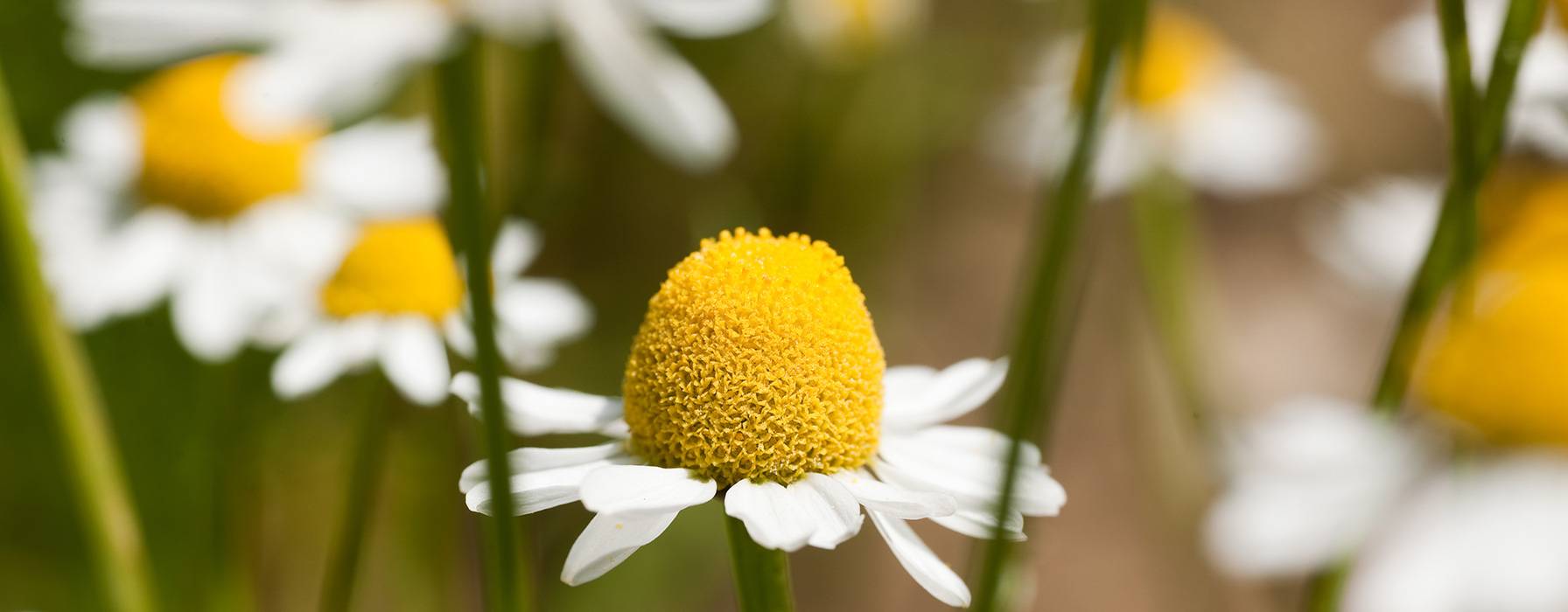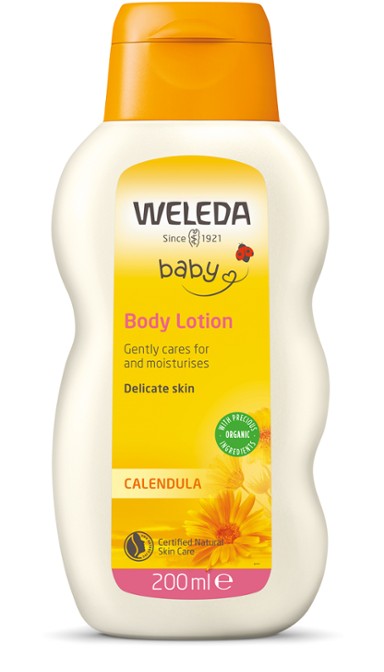
Botanical Profile: Chamomile
Chamomile is one of the most well-known plants in traditional medicine. Also the plant has a positive effect on the metabolism of the skin.
Distribution
Chamomile (Matricaria chamomilla) belongs to the Asteraceae (daisy) family and is one of the most well-known plants in traditional medicine. Its origins lie in the Near East and Southern and Eastern Europe; today it is widespread throughout most of Europe, North America and Asia. Chamomile blooms in the summer in sunny locations and can be found growing in fields, gardens or along the roadside.
Flowers
The plant grows very quickly and begins to bloom within just a few months. If it does not germinate until late summer, a rosette will be formed and bloom in the second year. Consisting of white ray flowers and yellow tubular florets, chamomile flowers are about 2 centimetres large and reach up individually on long stems toward the sun. A special feature of the chamomile is the hollow receptacle at the base of the flower. If sliced lengthwise, the flower seems to enclose a drop of air. Chamomile flowers have a distinctive and pleasant fragrance. Chamomile essential oil is extracted from the flowers using steam distillation. While most essential oils are yellow in colour, the oil derived from the chamomile flower is dark blue, which is highly unusual.
Leaves
Chamomile leaves are distinct in that they do not have a broad surface but are divided into thin linear segments, as if composed only of the leaf veins. The leaves appear light and airy, almost feather-like. When touched, they give off a fresh, sweet and aromatic fragrance that is particularly refreshing on hot days.
Use
This medicinal plant contains various active ingredients, such as flavonoids, mucilage, polysaccharides and essential oil. It has anti-inflammatory, antispasmodic and antibacterial properties. When used externally, chamomile promotes healing in cases of damage to the skin and mucous membranes. Chamomile also has a positive effect on the metabolism of the skin. It stimulates the skin's metabolism, supporting tissue regeneration and alleviating inflammation.

















